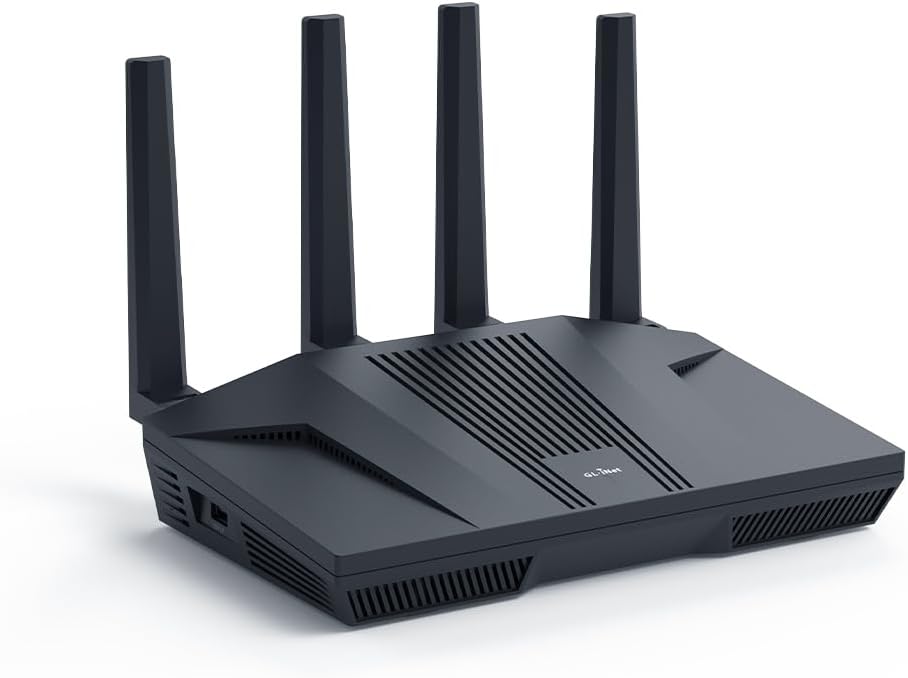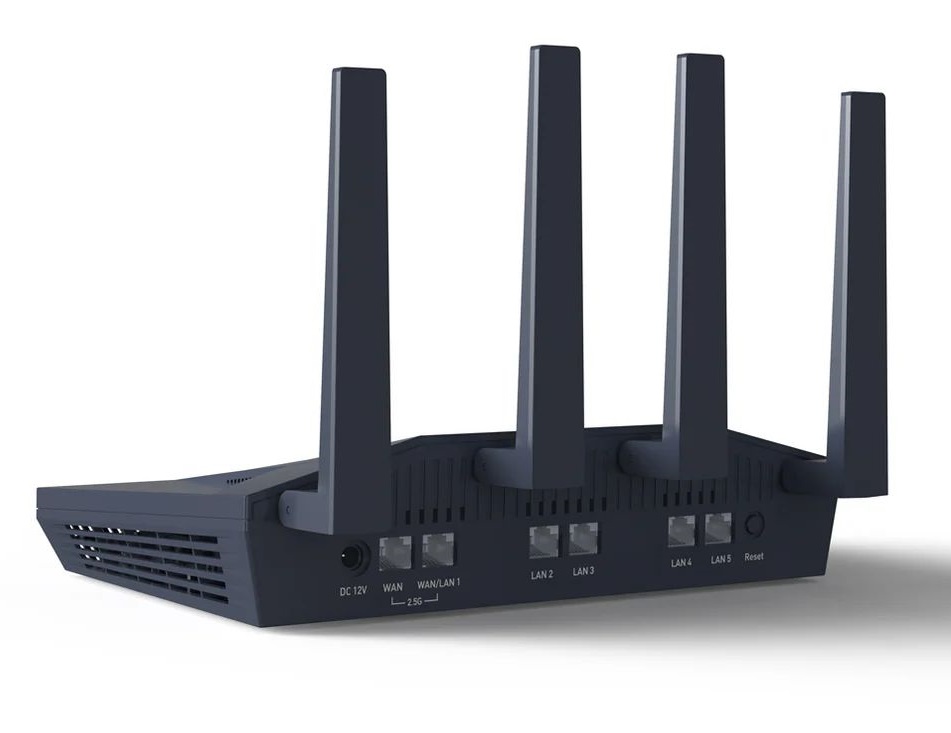A New Port – GL-MT6000


A whole year has now passed since I first announced the Tomato64 project. I’d like to thank all those who have tried it out, to all those who are using it, to those who have given bug reports and feedback, and to those who have given monetarily in support of the project. Honestly it has been a very fun and gratifying hobby for myself.
Earlier this year (or was it last year?) I saw a lot of hype around a soon-to-be released wifi router from GL.iNet, the GL-MT6000 (Flint 2). Looking at the specs it seems like something that would be a worthy successor to the current line of Tomato supported wifi routers. It’s also (fairly) affordable compared to similar routers, and can even be found on sale quite often for less. Even better, it ships with a fork of OpenWrt and has excellent Open Source support. I immediately punched in my credit card info and ordered an early bird model. I was very excited when it arrived. I played around with it for a bit, and then I let it sit in the corner for a large portion of this year. Tomato64 on x86_64 was still demanding a lot of my spare time. Finally I called up a good friend who had some electronic skills. I asked him to solder on some pin headers to serial access to the device. We were ecstatic 20 minutes later when we got it working.
With serial access I got to work on porting Tomato. The new and unique Tomato64 build system, based on the buildroot project, proved to make (relatively) easy work of it. Within a month’s time I had Tomato running on the GL-MT6000. At this point it (should) have feature parity with its x86_64 counterpart. At the time of writing there is no Wifi gui yet, but it is possible to create complex wifi setups following this wiki guide. I think this will cover the majority of use cases for Tomato users.
However, this is only the beginning. I have ambitious plans for this router, and perhaps a few never-before-seen features. Thanks for going on this journey with me!

Thank you lance! Got it flashed on my flint 2 tonight, wifi everything working great following the wiki. One thing i did notice was the entware installer isn’t working?
Thanks for the feedback! I’ve now fixed the entware installation script, it will be available after tomorrow’s nightly build.
Just bought this same router today. I would love to shove your firmware on it and give it a whirl! 😀
Curious to see what you do with it, excited for the potential and creativity you express!
Installation instructions in the following link just for reference.
https://github.com/tomato64/tomato64/wiki/GL.iNet-GL%E2%80%90MT6000-(Flint-2)-Installation-Instructions
Thanks for you interest!
Hi, thanks for bringing to us this project, as a fan of tomato router os i’m very happy to use it on more powerfull hw.
p.s do You plan to make build for Banana Pi R4 board with wifi 7 module ?
Regards.
The Banana Pi R4 board has definitely caught my eye in the past. I do like that it uses a mediatek chipset, has large emmc storage, and is supported by OpenWrt. At the moment I’m focusing on creating a new Wireless Gui for the GL-MT6000. However, these efforts will carry over to other future potential devices. I can’t promise anything at the moment, but the bpi-r4 fits the criteria for a good candidate.
Nice to see some love for tomato on newer hardware. They just lit up fibre where I live but the AX3000v2 seems to be difficult to source, so this looks like a good alternative.
The BananaPiR4 with it’s two SFP ports is intriguing as well, maybe bypass the ONT if possible and have a spare SFP option for LAN
I have heard in the forums that the AX3000v2 is a difficult one to find. Be aware that the build of Tomato for that router still uses the asuswrt gui. Tomato64 on the GL-MT6000 however is the full authentic Tomato gui experience through and through.
Once wifi 7 is fully worked out in OpenWrt (and linux general) I think the bpi-r4 will be a lot more interesting. The flint 3 pre-announced by gl.iNet unfortunately will not use a Mediatek chipset but instead will use one from Qualcomm. Qualcomm routers do not run mainline linux and it seems unlikely it will get vanilla OpenWrt support. Mediatek seems like the best way forward for Open Source routers and the bpi-r4 certainly has that going for it.
Lance are You have some free time to take a look on zyxel ex-5601 aka t-56 ? Hw is very close to flint 2, there will be much work to get it working with tomato64? This model is well supported by openwrt. Thanks for Your great work!
Same 7986a chip in that device as well. One hurdle I do see for that device is the limited 512MB nand. Currently Tomato64 is a bit big to fit in that amount of space. I do hope to get things slimmed down eventually, but for right now I’m trying to work out missing features.
Awesome ! i have faith in You ! till then i’ll play with x86 hw.
Thanks so much for your work on Tomato 64 for this router. I bought one and am actively using it with the 6/12/25 nightly build. It works well. Only thing I would like that it lacks is wireless client which took forever to get working on ARM in Tomato/Freshtomato. I copied over all my configs from my R7000 (manually) and then swapped it. Besides a typo which I identified, there were no problems. Amazing work.
Glad it’s working well for you! With the recent port to the BPI-R3 Mini, wireless client is that killer feature for something like a travel router as well. I do have plans to bring that Tomato64. I’m currently working on wireless mac filtering and so I think I will direct my efforts to wireless client soon after that.
Adding another word of thanks, and I plan to donate a bit your way too. I’ve been a Tomato user for 10 years (home and business), holding down with Wifi 5 routers as there was no firmware replacement that I liked as much. Finally upgraded our home to Flint 2 routers with Tomato64, and I’ve been impressed by how seamless migrating my software setup was. Thank you for your passion and contribution – looking forward to another 10 years.
Thanks you for your words and generous contribution!